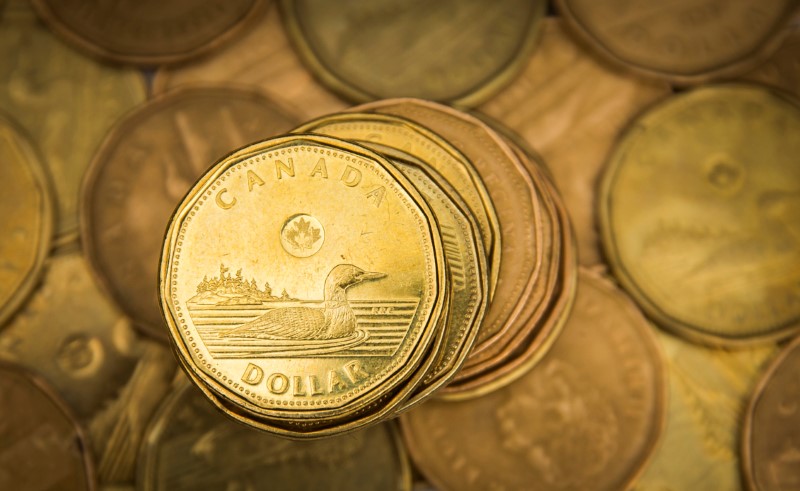TORONTO (Reuters) - The Canadian dollar strengthened to its highest level in eight weeks against its U.S. counterpart on Tuesday, as the greenback broadly declined and domestic data showed a surprise increase for wholesale trade in September.
The U.S. dollar fell against a basket of major currencies and U.S. stock index futures rallied as data showed that U.S. producer prices increased less than expected in October, providing further evidence that inflation was starting to subside.
Canadian wholesale trade increased by 0.1% in September from August, beating expectations for a 0.2% decline, helped by higher sales of pharmaceutical products, data from Statistics Canada showed.
Separate data showed that manufacturing sales were unchanged in September from August, an outcome that was also stronger than expected.
Canada's inflation data for October is awaited by investors on Wednesday for clues as to whether the Bank of Canada would raise interest rates by 25 or 50 basis points at its next policy announcement on Dec. 7.
The central bank tightened by 50 basis points last month, lifting rates to a 14-year high of 3.75%, but it has opened the door to a smaller hike.
The Canadian dollar was trading 0.3% higher at 1.3270 to the greenback, or 75.36 U.S. cents, after touching its strongest since Sept. 20 at 1.3227.
One negative for the currency was pressure on the price of oil, one of Canada's major exports. U.S. crude prices were down 1.1% at $84.92 a barrel as rising COVID-19 cases in China heightened fears of lower fuel consumption.
Canadian bond yields were lower across a more deeply inverted curve, tracking the move in U.S. Treasuries.
The 10-year eased 5.2 basis points to 3.107%, and was trading 1.5 basis points further below the 2-year rate at a gap of 72.5 basis points.
(Reporting by Fergal Smith; editing by Jonathan Oatis)
